Another day dawned, and the handsome city came to life. After breakfasting in our hotel, Lewis and I headed out to explore Vinohrady. It is in Prague 2.
Vinohrady means “a place for vineyards”, and that explains the area’s origins. The land was full of them, sloping gently down to Wenceslas Square. Despite Prague’s modern cosmopolitan vibe, vineyards still exist! Prague is fortunate to have six. They provide Life/Work Balance. The grapevines were cultivated carefully since the reign of Charles IV. Most wineries in the Czech Republic have a small output of only a few thousand bottles per year—but they are very tasty. The main products are sparkling wine, Pinot Noir, Pinot Gris, Merlot, Pinot Blanc, Riesling, Chardonnay, Cabernet Sauvignon, and Revovous.
In Vinohrady, a vineyard is situated in a Renaissance-style park named Grébovka. (Wine and the Renaissance are two things that blend well together).
Grébovka Pavilion is a quaint brick-and-timber restaurant nestled amongst the vines. It is open every day, and it enjoys a lovely view from a hilltop overlooking the city-center.
Spread over 11.5 hectares (28.4 acres), the park is near the Botič Stream: a habitat for trout, bream, perch, carp, sturgeon, and eels. It is forested with willow, elm, sorrel, hazel, hemlock, maple, linden, mulberry, walnut, oak, ginkgo biloba, and “sticky alder” trees. It was created in 1870 by a rich builder named Mortiz Grobe who desired a summer home. The rocks for the construction were repurposed from the 1,145-meter-long Vinohradsk Tunnel that helped trains arrive from Vienna. (It was the biggest project in the empire during 1869, and it was completed promptly within only two years). The hill is 245 meters above sea-level.
Vinohrady began as an independent municipality in 1788. It became the fourth-biggest in the nation. Commensurate with its status, King Karl IV renamed it as Královské Vinohrady (Royal Vinohrady) in 1867. In 1879, it was elevated in status to being a Royal City, which meant that it responded directly to the king. The king was represented by a chamberlain and a magistrate. During the “Roaring Twenties”, it was absorbed into Prague in 1922.
The government designates parts of cities as Urban Monument Zones. Some of Prague’s districts have that status: Vinohrady, Karlin, Vrsovice, Zizkov, Nusle, Bubenec, Smichov, Dejvice, Orechovka, and Baba.
It has always been a district of refined beauty: historic houses juxtaposed with Art Deco beauties, surrounded by lush greenery and plenty of parks. Adding prominence, it’s on a hill that overlooks the city-center. As its population increases, it will add another tram route to the City-Center in March 2024. (New rail routes never happen in NYC).
Lewis and I rode a tram from our hotel to Namesti Miru (Peace Square), which is the front of the neighborhood.
Erected in 1884, the centerpiece is the two-towered Basilica of Saint Ludmila, named for Princess Ludmila. She was born in 860 and married an early ruler of the Přemysl Dynasty. The square is a joining place for 10 streets that are named for other places—as is the custom in Vinohrady. We saw streets named for England, Yugoslavia, Italy, Romania, Belgium, America, France, and Silesia. (Silesia had its own dukes until their lineage died in 1675, so the duchy became a Dependency of the Bohemian Crown). The tram paused on a street named for the Crown Princess Štěpánka Belgická.
As we alighted from the tram, we noticed an office for the famous realtor, Engel & Völkers. Going inside, we spoke with a pleasant gentleman. Unlike pushy realtors in the USA, he wasn’t aggressive or over-inquisitive. He didn’t use false urgency to compel us to look at properties. He listened to our questions, gave us satisfactory answers, acted logical, recorded our contact information, and assured us that if we desired more info, he’d have somebody from the main office contact us. We learned that real estate and housing in Prague is vastly more affordable than London, Amsterdam, or America’s big cities.
Whereas prewar apartments (flats) in NYC are fraught with deterioration—even in rich areas—the ones in Vinohrady (and Prague 6 and 8) are well-cared-for.
We saw the glorious Vinohrady Theatre of 1907, topped with allegorical statues of Truth and Courage. We admired its ornate streetlamps.
Weeks ago, we watched online videos about “points of interest” for the area, and we wanted to visit the Vinohrady Pavilion. It was built as a Food Hall, but it is now full of stalls that sell furniture. But it was closed for a private event.
We strolled to La Bohème Café for coffee and a mid-morning snack. It is located on a cobblestone street named Sazavska.
It was opened in 2014 by an American immigrant named Charles Fleer. To have a coffeeshop exist for so long is amazing—especially because that doesn’t occur often in the vastness of NYC. Since NYC only cares about syphoning money from businesses, coffeeshop-owners are lured to the city but can’t sustain themselves. When they arrive, leaches and parasites come: interior designers, plumbers, building contractors, advertising specialists, and promoters. They all overcharge for inferior work. Then, the city smothers its new businesses with high taxes, fees for permits, fees for inspections, and fees for municipal services—not including the necessary bribes. Greedy landlords increase rent annually. Therefore, coffeeshops might exist for 2-3 years, hoping to regain what they already overspent (like they were led to believe). But they don't. The high costs suffocate them, and their businesses fail. Months pass while greedy realtors try to lure another hapless business-owner. Then, the leaches and parasites return, and they city fleeces more money. An exposé about that was written in 1906, but things remain unchanged to this day.
With three levels, La Bohème Café is spacious, and its central pillar is decorated as a faux bookcase. It is considered to be one of Prague’s best coffeehouses. We concur.
Below, notice that someone wrote the advice of "talk to strangers" and the title of a great adventure series: Arsene Lupin. Both are recommended.
The front room had sofas, armchairs, and coffee tables. We heard various languages spoken.
The back room had the barista/bar area. A pink velvet banquette faced four tables.
Unlike American coffeeshops, nobody toiled on laptops or overworked themselves on devices. Some customers wore headphones, but most people socialized with each other. That is Life/Work Balance.
This is a Czech coffeeshop...
...and this is an American coffeeshop...
Which would you prefer?
After we entered, a young Asian waiter invited us to choose a table, and Lewis opted for the deuce near the stairwell. It was a semi-private area.
The upstairs seating area contained the roasting machines, but it was reserved for a private event. We love places that do their roasting on-site. Lavatories and the kitchen were downstairs. We also love places that do their baking on-site. All tables had freshly-cut flowers in small vases. That's hospitable.
As Fate arranged it, a college student from America was our server. He liked his life in Prague. Just then, a drag queen entered, carrying two puppies in a knapsack. The dogs were silent, and she (he) seemed to be a “regular customer”. It was pleasing that nobody gawked, pointed, or scowled. Acceptance makes a society beautiful.
I noticed a buffet of of viennoiserie. That food was smartly supplied by Artic Bakehouse! Everything was handmade and baked on the morning of its delivery.
It seemed as if anybody could choose what they wanted, and I wondered how the waitstaff calculated the bills? More food was displayed near the baristas under glass domes and in refrigerated cases. We saw a luscious carrot cake that hadn’t been sliced yet. Hailing our server, I asked for a slice, and we got a big one! The thick layer of frosting was correctly made of cream cheese, and plenty of minced carrots were inside the dough.
From the barista’s talented hands, we enjoyed a perfectly-pulled espresso and a cappuccino with pretty foam art.
Baristas in Prague may look young, but they’re not like the uncaring college kids in America who give lackluster service at overpriced coffeeshops. In Prague, they are serious-minded and usually intend to make careers as baristas. Consequently, we received better service and supremely-made coffee—at half the price that America charges.
When you are in Czechia, cafés and coffeeshops provide “table service”. Most cities of the former Austrian Empire retain their “café culture” of servers bringing your beverages to you. It’s a classic Viennese method of providing customer service: you enter and sit, and servers take your order, provide water and utensils, and bring your food and beverages to you—nicely plated and presented. In fact, Europe’s first coffeeshop opened in Vienna in 1647. Vienna’s “café culture” is so integral that UNESCO honored it on its list of Intangible Cultural Heritage.
In contrast, American baristas expect you to linger near them so you can retrieve your beverage when they shout your name! They don’t want to waste time carrying your drink/food to you; they want to collect more revenue. You bring your drink to your seat, clean the areas if its dirty, fetch your own water, find where the napkins and utensils are, and you are expected to carry away your dirty dishes when you’re done. Americans baristas still expect a gratuity of $1-2 per drink.
In the capital of the Czech Republic, baristas invite you to choose a seat, and they politely deliver your beverage/food to you... and they clean up after you leave. Your priority is to enjoy the experience. Which culture do you prefer?
Furthermore, the costs are vastly different. That cappuccino in Prague cost $2.64. In NYC, it costs $6.00, plus $1.00 for a gratuity. (At Blue Bottle Coffee in midtown Manhattan, a large cappuccino is not given in a large cup; it is given in a medium-size cup, and it still costs $6.00!)
A blog about Prague informed us that there is a tempo to drinking coffee in the Czech Republic. People don’t sit there for hours. They arrive for beverages. Similar to Italians, they sip their coffee and they depart. Customers only linger for 30-60 minutes if they socialize with friends. People usually don’t focus on their devices (like overworked Americans). Socializing is part of being alive. American coffeeshops are full of isolated people who are digitally insulated against others. Folks in Prague like having their afternoon coffee amongst friends. If customers dwell at a coffeeshop, they abide by the custom of ordering food. Otherwise, servers might approach and ask if they want something… as a subtle hint. Expats and foreign-exchange students bring their bad habit of languishing at coffeeshops with only one beverage and their laptop… using it like their personal office. But Praguers quickly inform them that coffeeshops are not cafés or pubs, so they shouldn’t loiter. The motto is “Come for coffee, linger with friends and some food, and then progress onwards”.
Intriguingly, coffeeshops and cafés are places where people meet before having sex. Colloquially, these words have sexual themes:
Sukafe = a coffee date that ends with sex.
Zasouvaci podnik = café with sexy ambiance that helps you get laid
Zasousti = a park’s café surrounded by Nature that has sex appeal for hook-ups.
The waiter brought a wireless credit card reader to our table, and we paid with Tap-and-go. We had a lovely time there.
Afterwards, we returned to the main road and popped into Shin Foods. It is a Korean market that sells a variety of Asian groceries, frozen food, and snacks from South Korea, China, Malaysia, Japan, and the island-nations of Singapore and Taiwan. It’s neat, clean, and stylish.
We don’t understand why most ethnic stores in the USA are sloppy (probably because they are compelled to be in poorer outskirts of the communities). In Prague, the store had fully-stocked shelves and well-placed products. We liked how it provided a laminated Price List for everything in the freezers, so customer didn’t need to open the doors to find items. That conserves energy.
As we saw with the Chinese grocer, the prices are slightly more than we pay in the USA. In the USA, many ethnic foods are considered inferior to “white people food”, so prices are low (also because immigrants are usually still in poorer areas and are underpaid by Americans). Despite the slightly higher prices, we saw many Caucasians shopping in the store.
There was a wide assortment of sauces, spices, and vinegars. The back room was full of snacks, crisps, and chips. The side room had a Caucasian cashier and a Korean woman counting inventory. They were smiley and helpful.
Suddenly, we encountered Chef Purnata (from QQ Asian)! With a big smile, he recognized us, shook our hands, and we had a lovely 10-minute conversation about Asian markets in Prague. There needs to be more. He agreed that prices are higher because the foods are seen as imported delicacies. He told us to visit another Korean market named K-Food, located near the Municipal House. (We did, and it was also impressive). The chef informed us that the city’s Asia Food Fest occurred on March 16. We look forward to meeting Chef Purnata again. Lewis purchased a snack of savory chips that cost 129 crowns.
We strode past the best gelato shop, Zmrzlinar (it was closed), and we crossed a park named Sady Svatopluk Čech. The word for park is “sady”.
Born in 1846, Svatopluk Čech was an author whose satire novels are adored by Czech readers. He died in Prague, and a statue of him is in the park. The sculpture depicts him with a sprightly bare-butt man “flying” behind him.
Since it was February, the park had an ice-skating rink. So cool! In warmer months, the rink is removed to reveal a rectangular wading pond with fountains that people can splash in. That's impressive for a small space, and you can thank the City Councilor for Culture, Monuments & Leisure Activities.
Lewis and I admired the ornate homes on tree-lined streets.
We circled back to Korunni: the street named for the Crown of King Wenceslas (part of the Czech crown jewels). Trams dingled their bells as they rode in both directions.
Looking down, we admired the sidewalk. Sidewalks in Prague are beautiful mosaics of elegant brickwork, and they change on different streets. It makes the mundane activity of walking into a pleasurable moment.
Notice how clean they are! It's remarkable. The city provides free bags to dog-walkers so they don't leave dog poop on the pavement. The metal dispensers are spotless, too!
For us, it was a huge relief to simply use the sidewalk without constant wariness of stepping in abandoned dog feces. Every sidewalk in the five boroughs of NYC has it, every week, and it looks like this...
We crossed the street to investigate more stores. Please know that pedestrians must use a crosswalk, if it’s within 50 meters. Otherwise, police may issue a fine costing 2,000 crowns. (In contrast, jaywalking has been mostly ignored and condoned by NYC police for Lewis’ entire life).
We darted into a grocery market named, Moje Kredenc (My Cupboard), and we noticed a gourmet influence in the merchandise.
Two Czech women worked behind the counter, and they were very pleasant. A wall of wine bottles came from local wineries, as well as Italy, France, Germany, and Spain.
A refrigerated showcase had small-batch cheeses and cured meats from all over Europe. From Mediterranean nations, there were sun-dried tomatoes, olive oil, and various olives. One table was laden with Belgian chocolates, while another had cookies from the Netherlands.
Seen above, we were tempted to purchase a jar of duck liver terrine (only 299 crowns). Instead, we shared a meringue cookie-sandwich that was filled with caramel cream.
It was very good! It was made with wholesome ingredients. (Sadly, most of NYC is a cesspool of “junk food” and mediocrity, so you often find candies and pastries that are still made with titanium dioxide. Titanium dioxide is banned in the European Union but it will not surprise you to know that it is still allowed in the greedy/cheap USA, where corporate profits outweigh consumer safety).
Despite the low price of our pastry, we were still given a real plate and fork (reusable, instead of disposable) so we could eat it there. In the eating area, a Filipino woman spoke into her phone in her native language. But she spoke in Czech to get a refill of tea from the women.
Before we left, we noticed a bottle of Bombardino. It was smaller than the huge one at Gran Moravia, and the price was 350 crowns ($15), so Lewis bought it. (We drank it each night and loved the creamy taste)!
Lewis and I were delighted with everything in the store! We will return. Moje Kredenc operates three locations, and that proves their success.
We exited and realized that the neighboring business was the famous sweetshop: Kus Koláče. It opened in 2020 and survived the pandemic. Earning more fans every month, it sells high-quality Czech goodies with home-style goodness.
Its namesake is the classic koláč (koláče is plural).
We looked through the window and saw a young baker kneading his dough. Usually, there is a long queue of customers waiting to enter. At that moment, the eatery was quiet… but I couldn’t persuade Lewis to buy another snack before lunchtime. So, it’s on our To-Do List. Next to it, we recognized Vycep Restaurant!
We went around the corner to have lunch at a gastropub named U Tellerů (“At the Tellers”). It is a handsome corner-restaurant facing Jiriho z Podebrad Park. It opened in 2022 during a momentous time while Subjects of the British Crown who lived in Prague mourned the loss of their queen, and Czechia’s president and prime minister flew to London for the funeral.
Chef David Kalina is imbued with Czech gastronomy, yet he makes classic food with modern interpretations, such as braised rabbit wrapped in streaky bacon with smoked meat stuffing, or lamb shoulder with morel mushrooms and buttered peas. Lewis discovered the restaurant online and desired a traditional meal, but when he read the menu and noticed Crème Brulée Foie Gras, he was persuaded to have that, too!
It’s a large space with many windows. Dishes and platters were used for decorating the front of the bar, and that reminded us of the dishes hung inside QQ Asian.
The whimsical reason to use plates as decorations was because the prior pub was owned by the Teller family, and “teller” means “plate” in German. The Tellers’ pub existed for a long time in that historic building. Hence, the restaurant’s name is “At the Tellers”.
Over the bar, copper tanks prove that employees distill their own beer.
The chef displays his Dry Aging Room on a side wall—full of juicy steaks. A popular item is bone-in Ribeye that is dry-aged for 60 days.
A Czech waitress greeted us. Initially, she seemed brusque—the old type of “Czech customer service” that Czechs say needs improvement. But as soon as we spoke a few Czech phrases and showed our enthusiasm for local Czech food, we won her admiration. In that way, Czechs are friendly.
Once again, we liked how Czech restaurants always have a hook near your seat to hang your coat. It is a small detail, but it is sensible and civilized… and we rarely find it in the vastness of the USA. It was a delight to hang our coats, instead of rumpling them next to our seats, or hanging them on the backs of our chairs (so they got dirty on the floor). There was also a coat-rack that was full of scarves and hats. I can’t remember the last time I saw a coat-rack in a NYC restaurant (despite its frigid winters).
Our waitress presented a carafe of tap water. During our meal, we made her smile each time we said Prosim and Dekuju. Lewis requested the Foie Gras (100 grams for 295 crowns = $12). It came with handmade brioche and a candied orange glaze.
I requested the Pulled Beef Neck in Dill Sauce, and the woman’s face brightened as she said, “Ah, that is an old Czech recipe. Very good!” Czechs like it when you like their cuisine… and we definitely like it. My food came with fire-roasted potatoes and grated egg yolk on top.
Perfection for 265 crowns ($11).
As another appetizer, we were elated with fire-roasted mushrooms named Hedgehog Coral (grown in China and Japan). Every mouthful was heavenly!
I made the waitress smile with pride when I chose Koprovka s Trhanym Hovezi for my main course. “Ah, that’s another good Czech recipe,” she said encouragingly. It is made with supple Beef Shoulder that cooks in its own juices with carrots, parsley root, celery, onions, allspice, bay leaf, and peppercorns. Handmade bread dumplings accompanied it. Poured over everything was a phenomenal slow-stirred sauce, made with beef broth, cream, butter, flour (no lumps), freshly-chopped herbs, and a dash of vinegar.
Lewis ordered Kuře na Paprice (Paprika Chicken), which was another gloriously old Czech dish. The chef buys poultry from an organic farm that truly creates free-range chickens by using a tractor to haul the chicken coops to different parts of the pasture.
The meat was served in a pool of luscious Paprika Sauce, with a Celeriac Roll filled with green pepper ragout and roasted egg barley.
Again, our server grinned and said, “That is another very good dish—true Czech. You will like it.” We did. Almost every Czech person has a fondness for it. The fragrant amount of paprika also added a rich color, and Czechs love paprika!
We drank a draft beer: Pilsner Urquell lager (55 crowns = $2.31). Pilsners and pale lagers are the most popular beer in Czechia, and the Pilsner Urquell Brewery opened in 1842 in the City of Plzeň (Pilsen) to make the first pale lager in the world. It was mimicked globally, and now two-thirds of all beers are pale lagers—often named “pilsner” to honor that Czech innovation. Yes, Czechia invented pilsner! This is that city’s coat of arms...
Lewis also sipped a tall glass of homemade ginger lemonade with organic honey (85 crowns = $3.57). (That's an example of beer costing less than other drinks in Czechia). Everything was scrumptious! As another small detail—but a significant one—we liked how most restaurants in Prague had Salt & Pepper grinders, instead of shakers full of stale spices. That's quality.
The restaurant’s plump beef sausages looked irresistible, so we beckoned our waitress and ordered some to share. In the 1880s, an Italian sausage-maker moved to Prague, and his products were so good that locals called them “The Italian". That moniker still exists, and that was the name used on the menu.
Later, five young American women arrived. Until then, the volume of everyone’s conversations in the restaurant were politely low. Voices were barely audible to another table. We noticed that courtesy in almost all Czech restaurants. However, when the loud-mouthed girls arrived, their brash unconcern for others ruined the milieu. Like typical Americans, they laughed loud, cursed like sailors, complained about their jobs, and used the word “like” obsessively and ended their sentences with the word "so". Getting rowdy, their profanity increased and they broke a glass on the floor. With a typical “fake apology”—which Americans are known for and makes the nation look bad—they ignored the extra work that they caused for the waiters and they ordered more cocktails. In contrast, Lewis and I impressed our waitress with our decorum, courtesy, decent gratuity, and good manners. She smiled appreciatively and winked at us. Our sum was 1,239 crowns ($52) for a big lunch. Superb.
As we paid the bill, we noticed that someone forgot their scarf on the coat-rack, so I told a waiter. It was my “good deed”, and it reciprocated for when I left my wallet at Výčep.
Outside, we noticed that construction work occurred inside the square. We were amazed because the work and vehicles were so quiet. That never happens in America: construction can be heard echoing from badly-made machinery, and it lasts for several hours per day. In Prague, modern well-made machinery acted quietly to avoid disturbing anyone—just like we witnessed in Dublin, Oslo, London, and Berlin!
That allowed people who live around the square to enjoy their lives without disruption. Despite its astronomical prices, living in New York City is like being in a perpetual construction zone. Currently, there are 11 construction sites near our home, and they spew noise and dust during six days per week. Due to greedy overdevelopment in NYC, every month of the 13 years that we lived in Astoria was tainted with noise pollution from demolition and building-developers. Making it worse, NYC has endless roadwork by overpaid construction crews who repeatedly jackhammer, rip up, and repave roads. There is so much noise and dust! Praguers demonstrated that it can be much better.
The square is big. Jiriho z Podebrad translates to (King) "George of Two Peoples". After being crowned in Prague Castle, King George ruled with a well-balanced tolerance for Catholicism and the reformist religion named Hussite.
Due to the peace and prosperity of his reign, the square was named for him. Consequently, the Metro station is also named for the 16th Czech king. He is buried in the castle's cathedral.
As the heart of Vinohrady, the square has lots of parkland and is popular for its daily Farmers’ Market...
... yet it’s dominated by the Church of the Most Sacred Heart of our Lord—which is described as Art Nouveau, but it looks Art Moderne. Finished in 1932, the cubist building has a rectangular tower with glass walls (like a big window) and a see-through clock.
Its six bells chime beautifully. During WWII, the bells were melted to make weapons, but the community was happy to get new ones in 1992.
As we headed east, we suddenly noticed Stumble Stones in the sidewalk.
Seen across Europe, they memorialize lives taken by Nazis during WWII: minorities, homosexuals, Jews, political opponents, and handicapped people. If you think the Nazis killed a lot of people, then you will be disgusted to realize how many millions were killed through centuries—and on various continents—by the Roman Catholic Church: intelligent women, landowning women, medicine women, scientists, astronomers, biologists, anthropologists, map-makers, homosexuals, foreign populations who didn’t want Catholicism, believers in polytheism, Jews, Muslims, Protestants, opponents of any pope, and anyone who said that the Catholic Church was wrong. The Roman Catholic Church and its papacies massacred a vast swathe of humanity for more than a millennium via Crusades, Inquisitions, censorship, crimes of heresy, papal-authorized wars between European countries, witch trials, and papal-authorized colonization of other continents!
At the next street, we ventured into a complex of 255 newly-constructed residential units named Korunni Dvur (Crown Courtyard). The homes are in a portion of Vinohrady that it technically within Prague 10. Spread over 2 hectares of landscaped land, the buildings were sleek and offered spacious balconies that most New Yorkers can only dream of.
We respected how Prague maintains a low skyline with well-distanced buildings. It ensures that everyone gets daylight through their windows, without skyscrapers obscuring the sunshine. American landlords and developers would demolish anything—regardless of rarity or history—to generate more profit… and they don’t care if they overshadow playgrounds or block sunlight for hundreds of their neighbors. They feel entitled to do it, as if God allowed it.
According to Robert at Engel & Völkers, an apartment with 538 square-feet costs 31,000 crowns ($1,365) per month for rent. It includes a fully-quipped kitchen that connects to the living room, wood floors, air conditioning, a bathtub in the bathroom, and a foyer and bedroom with built-in wardrobes for storage. It includes proximity to a huge shopping center, Metro Station, and tram routes on the thoroughfare.
Conventionally in Czechia, balconies are often enclosed with sliding windows. We like that.
Unlike NYC, there were no electric poles installed stupidly outside someone'e balcony. In NYC, overpriced apartments look like this...
The builders didn't uncaringly put pipes, electric meters, and water valves on people's terraces. In NYC, it looks like this, and it's ugly...
We crossed the street to enter a handicraft shop named CVRK Orionka. Everything was made locally: scarves, handbags, cross-body bags, jewelry, bookmarks, diaries, toys, fashion accessories, pottery, and glassware. Hand-crafted things always interest us. Consider the skills needed by a blacksmith to create an iron trivet, or the glassblower’s agility to make a crystal carafe, or the nimbleness of a tailor to create embroidery.
Lewis bought earrings as a Czech-made souvenir for his mother, and the revenue was donated to Ukrainian Relief Efforts. According to their tag, the earrings were created by Ketri-d.
Wandering north, we encountered the huge Olsany Cemetery; a row of mausoleums had their backs to the main street, which was named Vinohradska.
The Flora Metro station was there, as well as a tram depot.
On the corner, we entered a large shopping mall named Atrium Flora.
It had four levels with all types of businesses—and that was different from American shopping malls which always have the same predictable companies and corporate-chain brands. The interior was skylit, stylish, upscale, and clean. No litter, no discarded cups, no homeless people. Near the entrance, we saw a spiffy Information Desk with three employees.
Exploring the concourses, we noticed on-site tailors, butchers, wine shops, American fashion brands, luxury brands (e.g. Gant, Rituals, Catches, Sephora, L’Occitane), a tire shop, bedding boutique, bookshop, pet shop, florists, gyms, lingerie stores, cosmetics boutiques, cellular stores, dry cleaners, pharmacies, Albert supermarket, Delmart grocery store, bank, and a sex toy shop. Yes, once again, we were in a nation that allows sex shops to exist openly in the city-center… and doesn’t treat sex as a shameful taboo.
That is unlike America. That is Life/Work Balance.
There was also an “Asian Shop” that sold prepackaged snacks and frozen treats, and the Chinese cashier smiled at Lewis as we browsed.
Remarkably, the T-Mobile store sold Xiaomi phones.
That’s almost illegal in the USA because Xiaomi makes better technology than Apple. (Every year, Apple increases its prices yet fails to make substantial improvements. Instead of doing better work, it asked the U.S. government to ban its competitor, and President Trump did that.. despite the U.S. being a so-called "Land of Opportunity" and "free marketplace". Another stupid aspect is that Apple makes its products in China and overprices them, yet China made better phones that cost less). That month, Xiaomi used Prague for its newest advertisement video. My Xiaomi phone outperforms my previous iPhones, with none of the glitches and none of the data-stealing that Apple is notorious for. We were glad to see Czechs having access to that high-quality company: the third-largest cellular company in the world. (Americans are still waiting for their industries to provide 5G internet service, which China had five years ago—at no extra surcharge). After’s Czechia regained its independence from Soviet control, T-Mobile was the first carrier to arrive, and it is the largest and most-popular carrier with 6 million customers.
At the top level, we saw a food court that was filled with “fast food” stalls, Czech cafés, a plush Indian restaurant, and a Sushi Bar with food moving on a conveyer belt. (Sushi conveyer belts were invented in Kanazawa, Japan).
Everywhere was clean and presentable—including the lavatories. There was also an IMAX theater.
That shopping center seemed to have everything that the community might need—and it was adjacent to trams and Metro trains. Smartly-planned infrastructure! It was vastly better that typical shopping malls in the USA. To see those, please use this link: https://halfwindsorfullthrottle.blogspot.com/2017/12/why-brick-and-mortar-stores-fail-and.html
Overall, Prague’s "retail scene" seems more resilient than Manhattan’s. In NYC, stores are closing due to high costs of additional security personnel and losses from shoplifting—while they struggle to pay Manhattan’s exorbitant rent (highest in world). Yet, NYC’s authorities and greedy landlords refuse to notice that… just like how King Louis XIV and last Czar didn’t notice their problems. NYC’s District Attorney has a new policy “Project Reset” that if people steal items or food valued less than $1,000, their crimes are diverted before going to court. Thieves who were arrested only complete a half-day course… and they are released again. The DA declines prosecution. The criminals never appear in court. They usually steal again. This month, a robber brazenly entered a 711 Store with a garbage pail and began stealing as much as he could fit in it. A customer filmed it with his phone, and the shopkeepers realized that the police would be slow and useless. So, they beat him with a broomstick, and he fled. He will never return. Alas, tax-paid police enforce less laws and cause vigilante maneuvers from taxpayers. Last month, NYC suffered from 1,417 robberies, 1,065 burglaries, and 4,056 crimes of Grand Larceny. Regardless, the police will demand a pay increase, next year.
We meandered through the neighborhood towards its largest park.
In the 1960s, hundreds of public clocks were installed on streets throughout the capital. Many were refurbished or replaced with replicas that can be automatically reset from a control headquarters. Clock management is done by the same municipal company that manages street (and Christmas) lighting: Technology of the Capital City of Prague.
Punctuality is highly-valued by Czech culture, and we like that.
Along the way, we admired the honesty of Czech society: shop owners left merchandise outside, and a mother left her baby carriage outside while she browsed inside. The baby napped, and nobody bothered it. Later, we learned from a Praguer that parents habitually leave their infants outside while they do quick shopping.
Nothing bad happens, and kidnapping is rare. Those are indications of a trustworthy/safe society! We love that.
Overall, people in Prague are very pleasant. Couples are often cutesy and lovey-dovey.
We arrived at the big park: Riegrovy Sady (Rieger Gardens). Consisting of 11 hectares (27 acres), it was named for a Czech politician: Frantisek Rieger (born 1818). In 1902, it was amassed from defunct estates and homesteads, and it served the public as recreational space henceforth. Situated on the slope of a hill, one side is 43 meters higher than the other.
We noticed modern Garbage Containment installations in the pavement. They exist throughout the city.
We saw similar systems in Amsterdam, Florence, and Oslo. Residents (or their porters) bring household trash and recycling to those units and drop it inside. Underground, the containers are big. The city’s sanitation trucks use mechanized arms to uproot each container and dump the trash in the truck.
Nobody has to touch the garbage. We swoon to see that type of infrastructure. Despite being America's richest city, the Neanderthals at NYC's overpaid Sanitation Department would never dream of spending money to have that effective system.
Even in NYC’s pricey neighborhoods (the most expensive in the nation), sidewalks are dirtied and obstructed like this.
During every humid summer, the odor is rancid! The stench lures vermin and insects. The wealthiest city in the USA doesn’t invest in cleanliness. Garbage containment would solve the overpopulated city’s vermin infestation and trashy stench. But neighborhoods (rich and poor) continue to pile their garbage on sidewalks in front of their own buildings. It is an eyesore. It resembles a third-world country. We prefer Prague’s methods.
In Czechia, smokers use metal receptacles for cigarettes, so they don't litter by discarding them on the pavement. Smart.
Prague is immensely clean...
The USA will never implement things like that, because unionized workers want to be overpaid (with unnecessary overtime) to manually do things... very slowly. Thus, greed in the USA makes the nation fall farther beyond the rest of the world.
Lewis realized that Czechia's cleanliness allowed many people to wear white clothes!
In contrast, New Yorkers are renown for wearing black (in their dirty city).
We sauntered along the park's perimeter. We veered into random streets for impromptu exploration of the fantastic architecture—literally full of fantasy: mythological beings, cherubs, and nymphs.
Each building was painted colorfully: green, baby blue, lavender, yellow, ruby, saffron, and beige. Stucco made the doorframes, cornices, ledges, and corners look extremely handsome.
In contrast, New York’s landlords don’t care what is done to their buildings, as long as it makes profits for them… so thousands of buildings are covered with ugly billboards and cellular signal-boosters.
It doesn’t seem healthy for tenants to have big cellular boosters attached to their buildings—directly above their windows or directly above their bedroom ceilings… but NYC doesn’t care.
Since NYC landlords are greedy for revenue and don’t leave enough space for two stairways, their buildings must be marred with exterior fire-escapes. After a century of neglect, those rickety metal stairways are rusty eyesores that deface thousands of buildings and make neighborhoods ugly. They are everywhere: expensive areas like SoHo suffer from them, and poor places in Brooklyn are plagued with them.
Another ugly uncaring characteristic of homes in NYC is that electric wires are strung directly in front of them. It’s ridiculous that high-voltage cables should have close proximity to homes. It’s like a third-world country. Who wants to pay $3,000 per month to have electric poles and tangled wires outside their windows?!
Making it worse, the city’s Power Authority charges the highest rates in the world for electricity, and therefore the city levies the highest taxes on it. Yet, they continually squander their revenue and uncaringly let things look ugly. That dilapidated electricity infrastructure seems unchanged from the 1880s.
It is laughable that Neanderthals run America's richest city, but that has continued unfixed since 1853.
Also, Prague's zoning is more caring than NYC because NYC allows industrial businesses to be within proximity to homes. Many of them work with marble-cutting, wood varnish, and auto-body paint, and their fumes, dust, and debris are stupidly allowed to contaminate the air near residential buildings!
To worsen the appearance further, NYC is one of the last places in the world that still uses wooden water tanks on top of buildings. Yes, NYC still has eyesores from the 1860s: water tanks on 15,000 buildings.
Unchanged in the modern era, three family-owned companies perpetuate the use of them: Rosenwach Tank Co; Isseks Brothers, and American Pipe & Tank. Uncaring landlords and property owners resist improving their infrastructure, so those antiquated relics besmirch the skyline. Yet, those properly owners overcharge renters and tenants for a view of NYC’s skyline.
Anytime that you see a photo with any of those things, you’ll know that it’s a photo of NYC, USA. The summary is a crappy lack of infrastructure like a third-world environment.
Returning to Riegrovy Sady, we saw its fitness center and a Beer Garden Restaurant. In summer, it looks like this...
We walked down the slope for a spectacular view of the capital. We didn’t realize how high we were until then. Prague’s rooftops and spires stretched beneath us, and we saw the castle glinting in the afternoon sunshine.
Later, we learned that more panoramic views can be seen to the south because Nusel Valley is between Vinohrady and Vysehrad.
The park was peaceful, so we perched ourselves on a bench and relaxed. Praguers walked their dogs, jogged, canoodled on benches, read books, sat on blankets, pushed baby carriages, and filled public bird-feeders. We saw many bird feeders hanging from trees in the park, and local residents are kind-hearted to keep them full. We also spotted birdhouses in the trees. That is evidence of a caring community.
After 20 minutes of bliss, we continued our stroll and encountered another café with a patio.
Wow, two restaurants in the park! Lovely.
Lewis complimented how well the paths were maintained. Paths in NYC's parks are neglected like this...
We were overdue to eat lunch, so we visited a Vietnamese restaurant named Pho Vietnam Slavikova. The employees were Vietnamese, and a long queue waited to enter. The place was tiny, with no room to sit. A few customers ate against a counter, but most people bought takeaway food.
Alas, it only accepted cash payments. Undeterred, I had an alternate eatery pinpointed on our map. It was a short walk.
We walked downhill on a cobblestone street to a place named Pho Vietnam Anglicka. It is operated by a family from Vietnam, and it’s located on Anglicka Street. Being in the lower level of a historic building, it benefitted from a vaulted ceiling.
The walls were painted with murals, and a plethora of paper lanterns dangled from the ceiling to commemorate the recent Lunar New Year. Strands of lights blinked festively on the whitewashed bricks. Enjoy Lewis' panoramic video of the interior...
While the owners cooked, two Czech girls worked as servers. The restaurant filled up quickly, so we were thankful to arrive early. We had perfectly-wrapped Summer Rolls filled with shrimp. Our pho was a large bowl of steaming beef broth, tender slices of beef, a hardboiled egg, and plenty of seasoning.
It was perfect for a February afternoon. All around us, happy faces indicated a satisfied clientele—and great cooking from the kitchen crew.
As we left, we looked down the street and saw the two-towered church at Namesti Miru. That was an ironic way to begin and end our exploration of Vinohrady from the same place! Sometimes, Fate has a sense of humor.
It was the homeward commuting time, yet the capital was unhurried. Enjoying the calm atmosphere, Lewis and I walked arm-in-arm all the way to our hotel. Every street was idyllic: no honking horns, aggressive drivers, shrieking homeless people, and no pedicabs with boomboxes of loud music. No smoky or greasy food carts on the corners of every street. No immense traffic congestion that causes choking amounts of exhaust. It was simply a scene of thousands of city-dwellers and commuters who improved their infrastructure with each decade and know how to behave.
Passing through Charles Square, we admired the New Town Hall again—looking resplendent in its spotlights.
Taking a different path to our hotel, we walked on Vodickova Street. It was established as a thoroughfare during the mid-1300s, and it connects Wenceslas Square with Charles Square. It was named for a wealthy butcher, Jan Vodicka, who owned the largest house on it.
We had enough time to freshen up and change clothes for dinner. That night, we had hard-to-get reservations at Prague’s celebrated restaurant: The Eatery. Fine Dining on a vibrant Friday night is a fun idea. In 2018, it opened to great acclaim from Praguers. It is in the Holesovice neighborhood, north of the city-center, across a bend in the river. It is in Prague 7.
The area is full of refurbished warehouses and old market-buildings. In other nations, those structures might look bleak or industrial. But in Prague, those buildings were always ornamental.
Thankfully, the capital is well-connected by rail travel, so we easily rode the Metro (Route C) under the river. It was wonderful NOT having to go online every day to confirm that the Metro was working… like people must do each day in NYC. Punctuality and reliability are treasured things for us. During our visits to 14 countries, their subways/Metros operate on-time. But America’s richest city has the most-delayed subway with corrupt administration that inflicts interruptions, reroutes, the bypassing of stations, and closures during every week of every year (during the previous 16 years of our lives). NYC claims that it doesn’t have funds, but it carelessly spends $5 million per day to keep refugees in NYC’s priciest hotels (the hoteliers are the mayor’s friends).
Erroneously, we overshot our destination and exited the train at Střížkov Station (in Strizkov). I’m glad that we did because we had a moment to appreciate one of the capital’s sleekest stations!
Opened in 2008, it is encased in glass and has a modern swooping shape.
It was so high-tech that it seemed to belong in Singapore. As trains arrived, blinking blue lights in the platform alerted you. Watch my quick video...
Those lights changed color as the train stops, and then lights on the doors blinked. Easy-to-read screens were overhead to inform you of upcoming trains and their timetables. Just watching a seamless blend of modern technology and orderliness made us smile… because we rarely see it in the USA.
Boarding another train, we rode back and exited at Nadrazi Holesovice Station. From there, we hopped aboard a tram to the Ortenovo Namesti Stop.
The restaurant was across the street. Once again, the trams were so silent that customers never heard them inside the restaurant. The restaurant is in the Metropolitan Building, which is known for high-quality technical facilities.
The dining room smelled divine, and it had a concrete-chic appearance. The plating of everyone's food looked meticulous. Every table was full, and the restaurant stayed full during our entire meal! That’s a great indication of excellence.
An older gentleman greeted us as the maître d’, and he was dressed trendily in a sweater, jeans, and leather sneakers. He took our coats to the Coat Check and escorted us to our chairs at the Chef’s Table, seen above and below.
In truth, it is a Chef’s Counter, and the L-shaped area lets 8 lucky people watch the chefs work meticulously in an open kitchen.
Chef Pavel Býček is rightfully boastful about the culinary brilliances that the Czech Republic provides. After his graduation, he travelled to England for four years working at Michelin-starred restaurants. He returned to his homeland and worked as Head Chef at the Alcron Restaurant. For five years, his efforts helped it retain its Michelin Star.
Now, Chef Býček and his cooking quartet create astounding recipes in a minimalist space of their own. At the heart of his creations is his quest to invent deliciousness. Yes, he is an inventor; he wants to try new combinations of flavors, go against global trends, resurrect overlooked cookery, and break limits. Anyone can duplicate a technique, but that is not true development. Chef Býček disregards protests that traditional recipes cannot be altered; he dabbles in new ideas that give life to old recipes. The results are nourishing and taste exactly as they should (yet he chose a new path to achieve that). If chefs say "I would never think to add that ingredient!", I would ask them "Why not? What are you spending your time thinking about?" If envious restauranteurs ask "What is he doing that we're not doing?", I would reply that he is truly "questioning norms and creating excellence".
Chef Býček's kitchen team is in full-view, and it’s a delight to witness their culinary acuity. This year, their excellence was rewarded with a Michelin Bib Gourmand award. Congrats to them!
A sous chef was working near our places at the counter, and he welcomed us as we sat. Coincidentally, he was the person who described all our dishes. Smartly, we chose the Chef’s Tasting Menu.
Our dynamic dinner cost 2,748 crowns ($115.46), and it was worth every crown. It was entertaining to watch each specialist: sauces, roasting, desserts, preparation, and cold dishes. Two Czech women washed everything in an adjoining room. Similar to QQ Asian, their room had an automatic sliding door that was activated by a foot-panel.
A middle-aged Czech fellow was our waiter, and he was endearing with his nation’s gastronomic heritage.
He smiled grandly whenever we wanted to know more about it, or whenever we used a Czech phrase that we learned. Deftly, he guided us through the extensive wine list. Always deferential to us, he never steered us to have Czech wines, but we impressed him by always choosing them. Each one was delicious on our palates.
Our appetizers consisted of Beetroot baked in ash and served with roasted hazelnuts, black cherries, and mead (alcohol made of fermented honey with yeast). We also had luscious lobes of succulent Goose Foie Gras that was pan-fried and served with hay-baked Apples and Pain d’Epice.
The chefs bake their own bread, and we love fresh-from-the-oven bread. It’s plentiful in Prague!
The menu featured pan-fried Bull Testicles with Raisins, but I opted for Egg Terrine cooked with Root Vegetables, Celeriac, valuable Black Truffles, and pickled Vegetable Gel.
To enhance our food, Lewis and I selected glasses of a local-made white wine named CH. The label was marked with the term “Sur Lie”, which is a French term for aging the wine while including the lees (expired yeast cells). It requires extra care, but it releases proteins that blend with tannins to enrich the taste. It’s often done with white wines.
Our 2012 vintage was a combo of Chardonnay and Pinot Blanc, and it had a lovely complexity. It was produced by Vino Hort, which opened in 1999. The vines grow in Hodonice, a sub-region of the wine-growing region that has chalky soil—ideal for Pinot Blanc. The wine was made in South Moravia, in the Village of Vbrovec. Not surprisingly, the region's flag and the village’s coat of arms incorporates grapes.
The wine cost 890 crowns ($37). We drained our glasses with glee.
As a palate cleanser, we were served handmade Pribinacek: a Czech yogurt that everyone grew up enjoying. It was covered with vanilla curd cream. Lovely.
The chefs were pleased that I wanted to eat a traditional Czech dish that requires lots of effort: Pork Tongue, Pork Shank, & Black Pudding (Blood Sausage). That trio was served with Potato Bread, White Cabbage, Potato Wedges, and a Horseradish Apple Salad. As a reflection of old-country traditions, the three pork recipes require different cooking times and separate sauces… but they must unite on the plate. (Tongue must be peeled, too). Their process of making Pork Blood Sausage is similar to French haute cuisine. Good parts of pork are boiled (to separate them from bones), simmered, and ground coarsely. Fat is skimmed off. Barley or groats are added to boiling water until the liquid is absorbed. Then, it’s baked. The mixture is blended with the meat and stuffed into pig intestines (sausage casing). Before the sausages are tied, the cooked blood is poured in—with a dash of vinegar and spices. The sausages are cooked slowly on low heat in a cast-iron pot (Dutch oven). It is a culinary triumph to concoct Pork Blood Sausage correctly.
Concurrently, the Pork Shank (a.k.a. “Pork Knuckle” or “Ham Hock” = front lower leg) was prepared. Due to its fat content, it remains moist, and its collagen creates a complex flavor, but you want the skin to be crispy. Usually, the meat is brined for days beforehand. Then, it’s roasted slowly for 5+ hours. A final “umph” of heat makes the skin crispy.
When the chef handed his plate to me, I was awestruck with appreciation for his zealous talent. He smiled broadly. I loved every mouthful! It is a new "favorite recipe", and I thank Czechia.
The sous-chef explained that they always use high-quality ingredients—from small-batch suppliers—with time-proven techniques. The pride in what they do is one of the reasons that their kitchen is visible to everyone.
Lewis got Hen Confit, Bell Pepper purée, Marrow Dumplings, Crème Fraiche with Horseradish, and Hen Broth. Bone marrow is ideal for dumplings! (It’s used globally, but many Americans are still squeamish about it. We are exceptions to that). The chicken in the recipe was an old breed that originated in Bohemia in 1205!
The chefs exuded scrupulous diligence. We ate every morsel!
To pair a wine with our meaty dishes, we had a candid conversation with our waiter. After deliberation, we all agreed that a robust red wine should be poured. He grinned with fondness when we wanted another Czech wine. With élan, he provided samples of three varietals. We chose a Frankovka: an extremely old Germanic grape that flourishes in Moravia and has a ruby color, plummy bouquet, and velvety mouth-feel. Ours was designated as “VOC” because it came from grapes only harvested in the approved areas of the wine-growing region. The government’s approval depends on having original soil composition. Our wine was produced by J. Stavek Winery, founded in 1898. The 2021 vintage cost 860 crowns ($36). The bottom of the label said “Vino ze Svahu Deviti Udoli” (Wine from the slope of Nine Valley).
For dessert, we shared the pastry chef’s rendering of Medovnik (Honey Cake), which is a classic Czech treat that is loved in every home. We loved it, too! It is a 15-layer cake flavored with salted caramel cream and moist sponge cake that is accented with Espuma Honey. Caramel frosting is on each layer, and it is decorated with streusel (crushed crumb topping) and ground walnuts. Utter deliciousness!
We also had Buttermilk Panna Cotta, with Poached Plums and Cinnamon Ice Cream.
Our waiter tried to hide his elation when we requested a dessert wine made in the Česká Republika. His homeland supplied the answer with glasses of Tramin Zluty by Jan Vanek. Made in 2021, it cost 650 crowns ($27).
Using the lavatory provided a final treat because it had soap and hand lotion made by Aesop that smelled like rosemary, cedar, and mandarin rind. Elegant.
Since the Metro station was so close, we didn’t use the trams; we walked to it. A train arrived promptly (with metallic slats decorating the ceiling, red cushioned seats, and clean hand-poles), and all the passengers were orderly.
It was a clear starry night, so we exited early at Florenc Station...
... and decided to wander through the picturesque city and experience an energetic Friday night. More prom-goers caroused at nightclubs, and pulsating music emanated from bars. Pubs were full of milder drinkers who commiserated with their neighbors. Cyclists dingled their bells, and trams clanged theirs. The cobblestones clacked under people’s heels, and the echo of merriment echoed off the colorful buildings.
It was a treat for us to walk through the city at night and not be afraid. Whether the street was crowded or quiet, we felt safe. According to data from the 2024 European Safety Index, Czechia is rated as #12 of 100 of the safest nations—beating Spain, Germany, Norway, Poland, and Austria. (Lewis and I visited Spain, Germany and Norway, and we thought they were very safe—night and day. That makes Prague ultra-amazing!)
The criteria include Perception of Safety, Safety Walking During the Night, Hate Crimes, Mass Shootings, Muggings, Burglaries, and Murders. A British insurance company, William Russell, declared that Prague is the third-safest capital in the world for travelers.
Unlike America's expensively-wasteful duplicity of federal, state, city, highway, bridge & tunnel, and transit police, the Czech Republic uses a national police service.
It was established in 1991 and reports to the Ministry of the Interior. In some countries, police are indifferent to "inconvenient crimes", but officers of the Prague City Police are keen to maintain order.
Seen below, constables are augmented by members of an Anti-Conflict Team. They handle civil disturbances before illegal acts occur and strive against negative group dynamics.
Unlike the NYPD, Prague's police use functional street-cams to track and identify culprits and capture them. They often publicize the successes of their video surveillance.
Most of the police vehicles are produced domestically by Škoda, which is Europe's largest car manufacturer. (The Czech company began as an arms-maker in 1859, and it grew into one of Europe’s biggest industrial conglomerates of the 20th century).
For off-road patrols, police use Land Rovers and Volkswagen pickups.
Being in a prosperous society, cops also ride in cars made by Audi and BMW, and we saw those in Prague many times.
Those brands are all better than the vehicles used by the NYPD, yet NYC pays twice as much for its boxy behemoths.
Skeptics suppose that they are needed to propel the famously fat cops.
Alas, despite guzzling the world's biggest police budget and feeding the world's biggest police force, NYC's crime is unchanged, and the same areas suffer the same crimes for 100+ years. How dare they call themselves "Law Enforcement"?! Their apathy increases annually, yet cops get pay raises annually, which seems undeserved.
*Please use this link to see a prominent example of their ineffectiveness: https://halfwindsorfullthrottle.blogspot.com/2021/02/another-sign-of-stupidity-in-this-city.html
In 2022, there were only 122 murders in the Czech Republic... in the entire nation (population 10.7 million). How many occurred in your area? In 2022, NYC had 434 by itself (population 8.3 million), so it has a higher ratio of death per citizen (and taxpayers overpay for that situation). I won’t ask about your national level of homicides because it’s probably higher than Czechia’s.
Back at our hotel, we sipped our eggy liqueur and nibbled on Czech chocolates. We had sweet dreams, too.
Kindly join us for the next part!











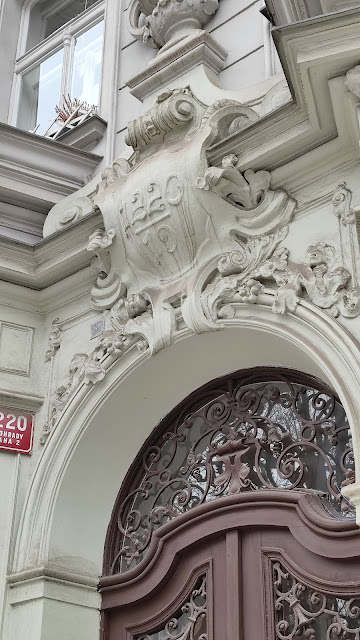





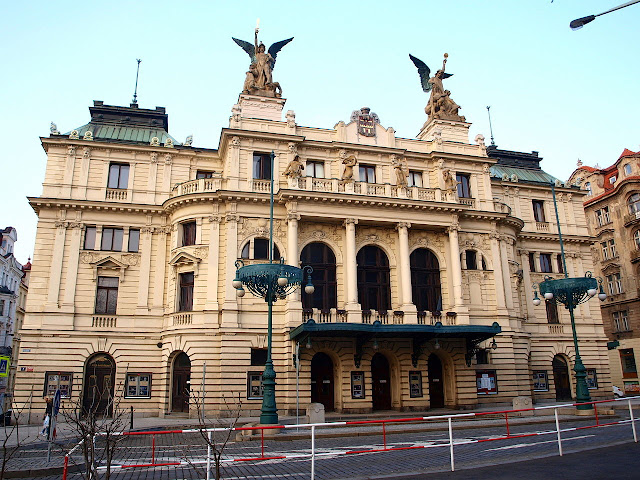

.png)
.jpg)



























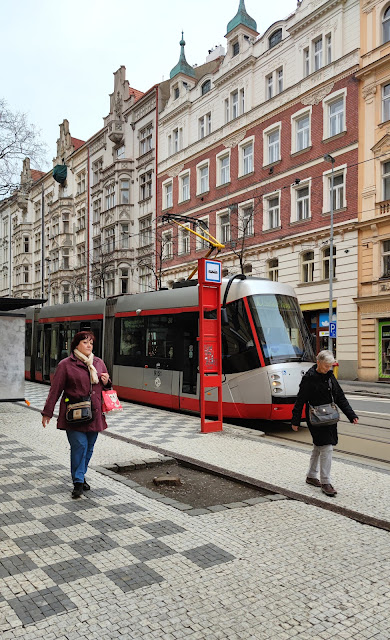



























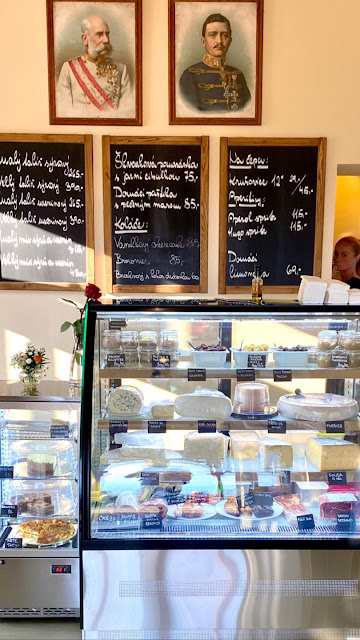





























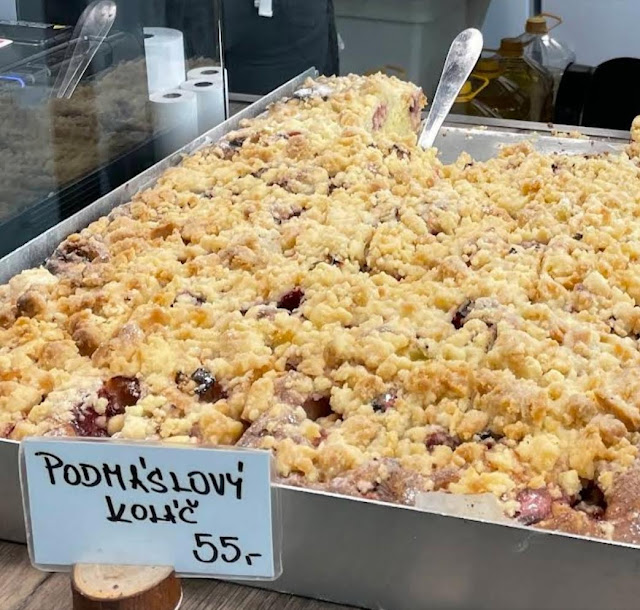







.jpg)

.jpg)


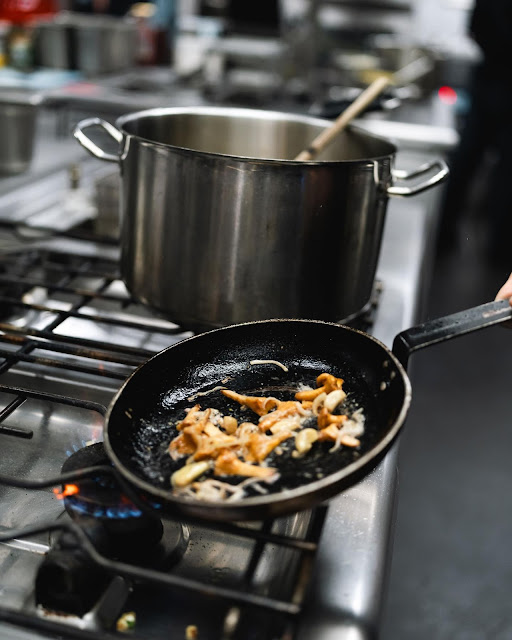

























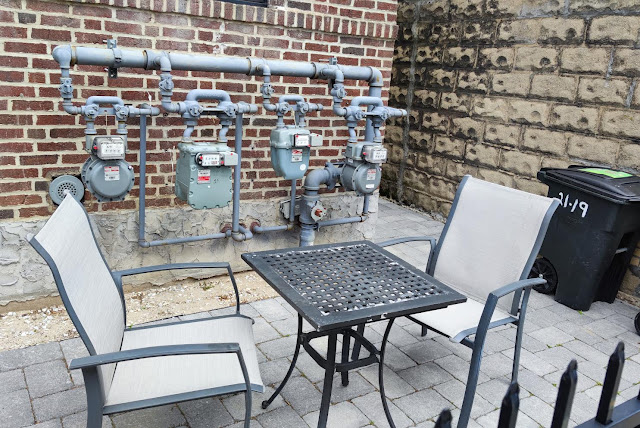







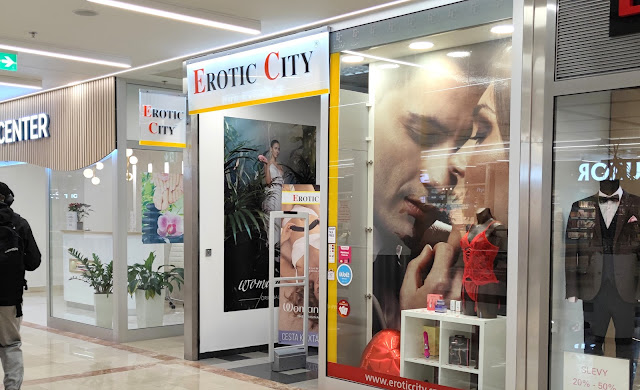

















.jpg)












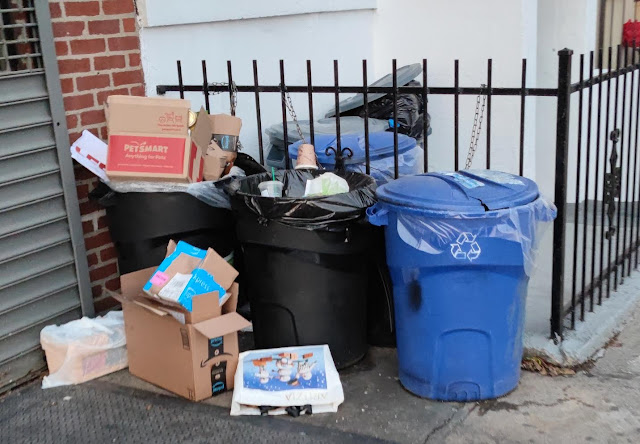
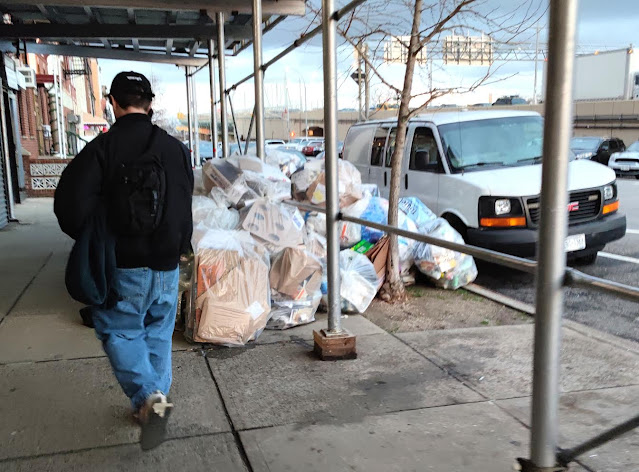




















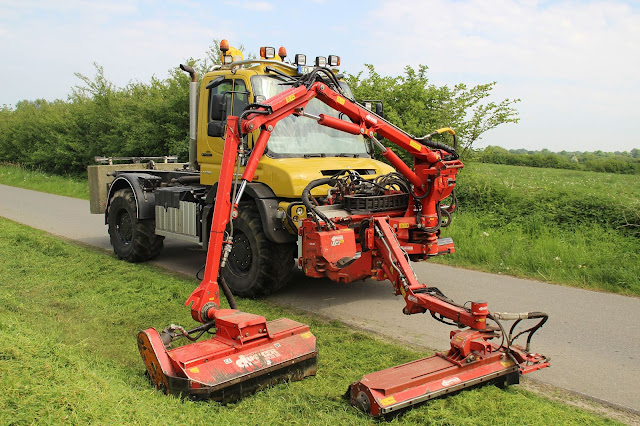



































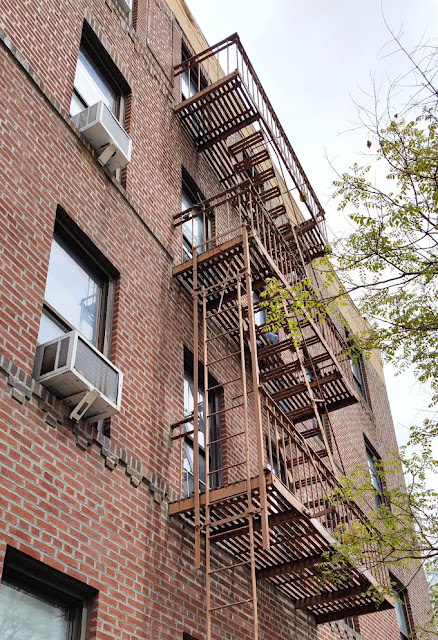









































































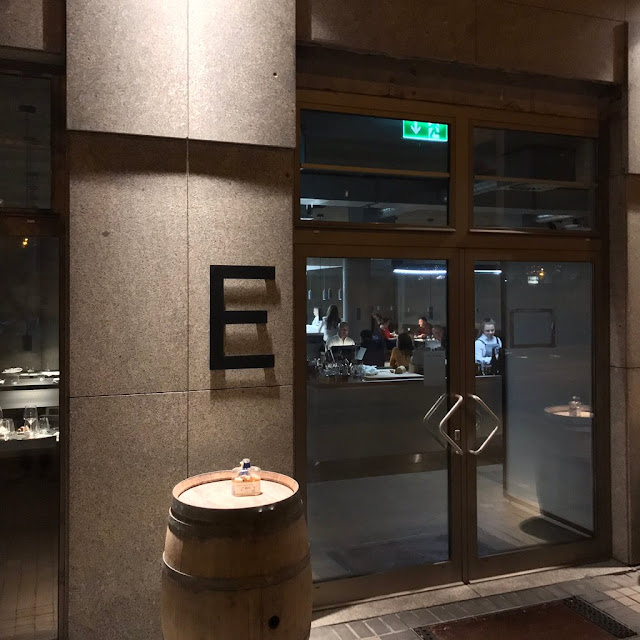
























































,_front_NYIAS_2022.jpg)









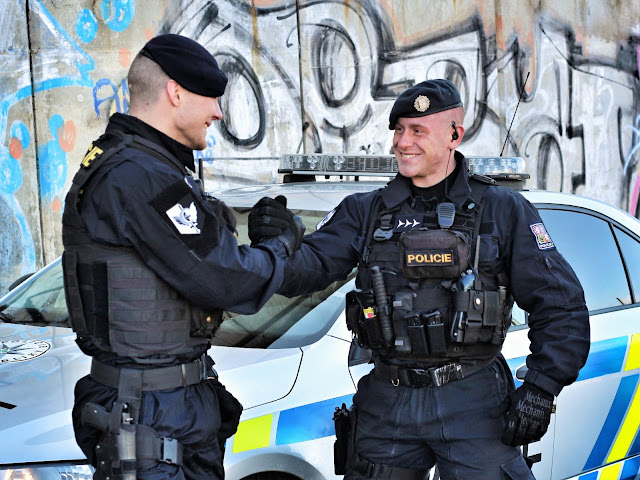




No comments:
Post a Comment
Don't be shy: leave your comments :)